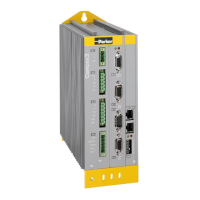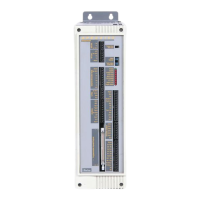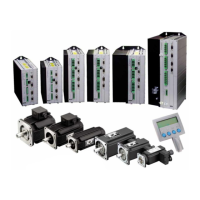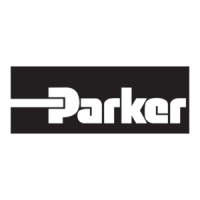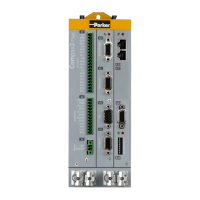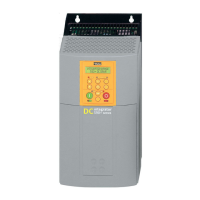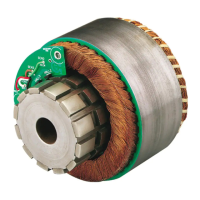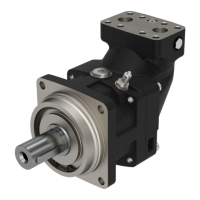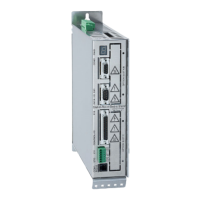Parker EME
Setting up Compax3
192-120113 N08 C3I12T11 - December 2010
Characteristics of a control loop setpoint response
T
Sr
: Response time. (Time elapsing until the control variable reaches one of the
+-5% tolerance limits for the first time)
T
S
: Settling time. (Time elapsing until the control variable ultimately enters the +-
5% range)
V
m
: maximum overshoot width
1 Tolerance range +-5%
2 Setpoint value
Response
The response of the controller is the behavior of the actual value with respect to the
calculated profile of the setpoint generator. The kinematic status variables, speed,
acceleration and jerk are fed into the cascade as feedforward signals. The
feedforward signals work with calculated factors and contribute to an improved
contour constancy due to the minimization of the following error.
Compax3 servo controller structure
Feed Foward Control
Vorsteuerung
PI-Current Controller
PI-Stromregler
Signal Acquistion
Signalerfassung
t
s
v
t
a
t
r
t
Setpoint generator
Setpoint position
Speed
Acceleration
Deceleration
Acceleration jerk
Deceleration jerk
a
w
, n
w
i
w
, j
w
x
n
i
P-Position Controller
P-Positionsregler
PID-Speed Controller
PID-Drehzahlregler
a
w
n
w
x
w
j
w
x: Position actual value n: Actual (rotational) speed i:
Actual current
value
x
w
: Setpoint position value n
w
: Velocity setpoint value j
w
: Jerk setpoint value
a
w
: Acceleration setpoint value
Limitation behavior
Each control variable is limited by the control (actuating) element. If the control
variable demanded by the controller is within the linear range (without limitation),
the control loop shows the behavior defined by the design. If the controller
demands however a higher control variable than permitted by the limitation, the
control variable is limited and the controller slows down.
You should therefore make sure that the control variable (output) of the controller
does not remain within the limitation or only for a very short time.
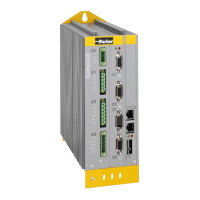
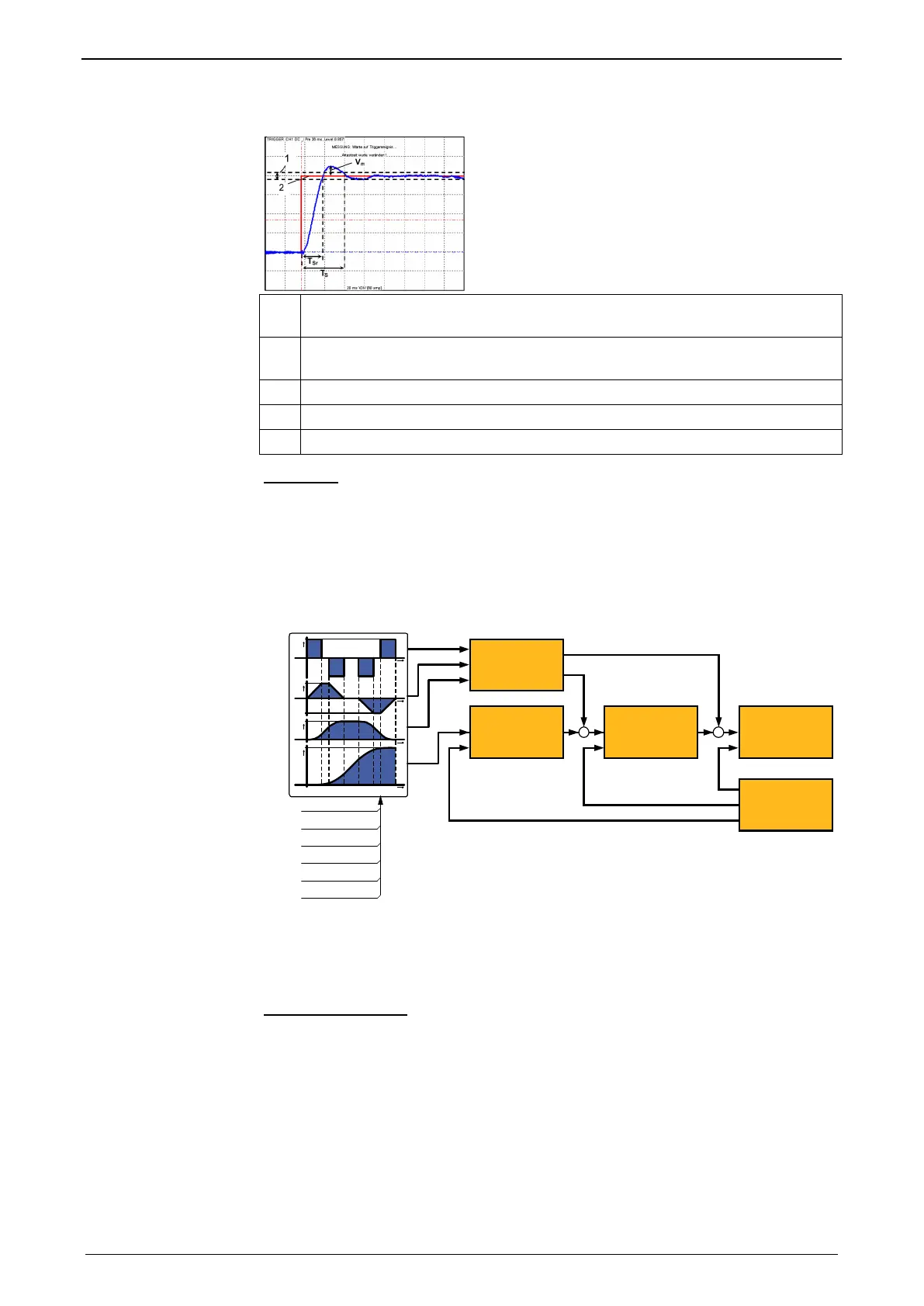